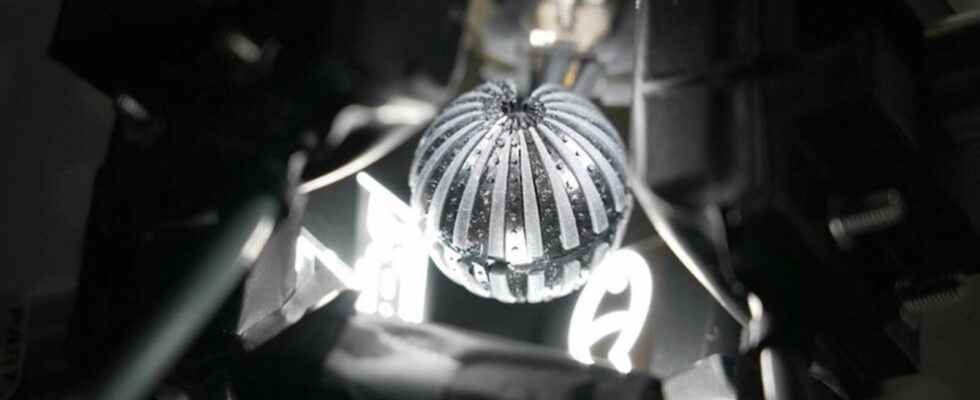In the United States, MIT was inspired by the vision system of the fiddler crab in order to create an artificial eye endowed with a view at almost 360°, capable of mixing visible light and its polarization. The eye retains its sharpness and focus as it moves from land to a murky aquatic environment.
You will also be interested
[EN VIDÉO] Eyes that move seen from the inside The exercise for the subject is simple: follow a moving point with the eyes. When he performs the task under MRI, the result is rather surprising… and almost frightening.
the biomimicry is a common practice for technological innovations. Whether it’s the insects or volatiles to improve the flight performance of aircraftor the structure of a vehicle with the honeycombs, examples abound. Among the novelties in matter of biomimicrythere is the experiment carried out by the Massachusetts Institute of Technology (MIT) in the United States on artificial eyesight. Their inspiration is the fiddler crab, whose males have the particularity of being equipped with an enormous claw. As another specificity, this species crab has a visual system capable of processing both the light visible, but also its polarization.
The two light signals are managed simultaneously and separately by the nervous system of the crab. A process that increases the contrast of a subject, relative to its background, which is useful when the crab is in a muddy environment to avoid an attack. The researchers therefore relied on this natural ability to develop an artificial vision system capable of reproducing the vision of the crabwhether underwater or on land.
An eye that sees 360°
This eye artificial looks like a small spherical black ball. Like the crab’s eye, it combines an array of flat microlenses with an index profile of refraction graduated. The assembly is traversed by a network of flexible photodiodes. With this process, the light rays coming from several sources always converge at the same place on the sensor of picture. While current artificial vision systems are specialized in an environment, terrestrial or aquatic, this sphere can do both with the addition of a field of vision of almost 360°.
By mixing the two types of vision, it also delivers a 3D view. Other models of biomimetic cameras exist. In these other cases, the scientists were inspired by the eyes of insects or Pisces. But, in all cases, their field of vision was limited to a maximum of 180°. Their ability to maintain focus when the eye was submerged, or out of water, was also not good.
Interested in what you just read?
